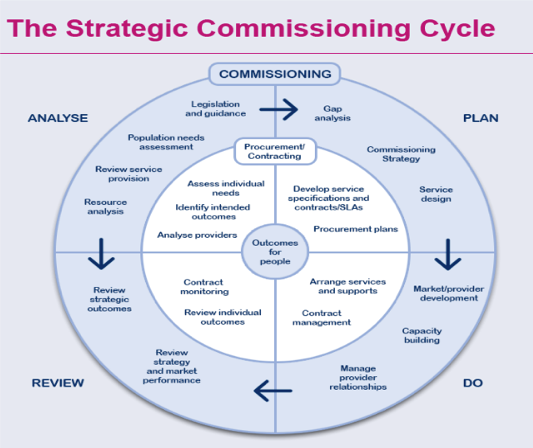Assignment Sample BU7402 Health and Social Care Commissioning
“Diabetes disease in India”
Introduction:
The rate of people being diagnosed with diabetes is said to be increasing at an alarming rate all over the world. India is also not an exception to this growing trend of the increasing rate of diabetic diagnosis. As per a report that was published in the year 2017, by the IDF (the acronym for which is known as the International Diabetic Federation), India is said to have nearly about 77 million of the country’s population to be diagnosed with the disease. (Rajput, 2021)http://BU7402 Health and Social Care Commissioning According to a report it states that China is known to be one country that is known to be the world’s most affected countries by diabetes disease which is then followed by India (meaning India rank 2nd in the world context to be the one country that is highly affected by diabetic disease).
It is said that in the world context nearly about one person out of 6 individuals affected or diagnosed by diabetes is said to be from India which means India makes up for 17 % of the world’s population to be affected by the diabetic disease (Ghazi,2021).http://BU7402 Health and Social Care Commissioning According to a report published by the IDF (the acronym for which is known as the International Diabetic Population) the Number of the Indian population affected or diagnosed by diabetic disease is said to only keep on increasing to the point that by the year 2045, the number of the Indian population affected or being diagnosed by the diabetic disease is said to account to nearly about 134 million (Thomas,2021).http://BU7402 Health and Social Care Commissioning
Drivers, processes, and strategies of health and social care commissioning.
According to a survey conducted in India, it stated that type 1 diabetes is said to be on the rarer side in the country as opposed to other western nations or countries. Out of the hundreds and thousands of people diagnosed with the type 2 form of diabetes, only about one-third of the type 2 form of diabetic patients who are diagnosed with the disease are said to be either obese or either overweight. A study which was conducted in the year 2004, states that most of the population or the citizens of India suffering from the Type 2 form of diabetes is said to occur mostly because of factors such as external factors (such as the
environmental factor) and internal factors (such as the changes in the living style of the people or the population) which mostly occurs due to the growing industrialization within the country or because of the migration of the people from the rural and village areas to the cities and the urban areas. Also, a study that was conducted in the year 2017, states the prevalence of diabetes was known to be much higher in Urban areas as opposed to rural areas.
Background about the diabetic disease:
Diabetes is a type of disease that is caused due to high blood levels of sugar. Diabetes is mostly related to insulin. Insulin is a hormone whose main function is to move the sugar from the blood into various parts of the cells so as to be stored up to be used as energy by the body. However, in the case of a diabetic patient, the body is not able to make the insulin or is not able to efficiently utilize the insulin (Tiwari,2021).http://BU7402 Health and Social Care Commissioning
Diabetes is usually categorized into the following types- type 1 form of diabetes, type 2 form of diabetes, prediabetes, and gestational diabetes. However, out of the four types of diabetes, the Type 1 and the type 2 form of diabetes are the most commonly occurring diabetes. Type 1 type of diabetes is said to be an auto-immune disease where the immune system of the body when it should be protecting the body against foreign antigens ends up attacking the body and ends up destroying the pancreatic cells where the insulin is generated or made. Whereas, type 2 diabetes is said to take place when one’s body ends up becoming resistant to insulin and which ends up resulting in the building up of sugar in the blood (Tyagi,2021)http://BU7402 Health and Social Care Commissioning
The symptoms of diabetes consist of an increase in one’s hunger, always thirst, loss of body weight, constant urination, poor vision, getting tired easily, and vice versa. The male diabetic patients experienced the following symptoms- decline in the drive for sex, ED (the acronym for which is known as erectile dysfunction and also lack of strength in the muscle. Whereas, female diabetic patients experienced- infections in the UT (the acronym for which is known as the urinary tract), infections pertaining to yeast, and itchy and dry skin (Kumar,2021).http://BU7402 Health and Social Care Commissioning
Status report of India with regard to diabetes
Prevalence of diabetes in India:
The rate of people being diagnosed with diabetes is said to be increasing at an alarming rate all over the world. India is also not an exception to this growing trend of the increasing rate of diabetic diagnosis. India is known to be the second most populated country in the world after China. The population count of India is said to be nearly around 1.3 billion people (which is nearly about 4 times the total population count of the USA). As per a report that was published in the year 2017, by the IDF (the acronym for which is known as the International Diabetic Federation), India is said to have nearly about 77 million of the country’s population to be diagnosed with the disease. According to a report it states that China is known to be one country that is known to be the world’s most affected country by diabetes disease which is then followed by India (meaning India rank 2nd in the world context to be that one country that is highly affected by the diabetic disease). It is said that in the world context nearly about one person out of 6 individuals affected or diagnosed by diabetes is said to be from India which means India makes up for 17 % of the world’s population to be affected by the diabetic disease.
As stated earlier, the diagnosis of diabetes is categorized into two types namely, type 1 form of diabetes and type 2 form of diabetes. When a survey was conducted in India, it was found that most of the Indian adults who are diagnosed with the disease i.e., diabetes said to procure the Type 2 form of diabetes rather than the Type 1 form of diabetes (which means that the occurrence of the type 1 form of diabetes is known to very rarely affect the Indian adults as opposed to the Type 2 form of diabetes, which seems to be the major type that seems to be affecting the Indian adults).
It has been reported that most of the reason for the rise in the cases pertaining to the diagnosis of the type 2 form of diabetes in Indian adults occurs because of two reasons- the first reason being resistant to insulin and the second reason being due to the pancreas slowly and gradually losing its ability and capability to make or produce insulin. There are also other factors that seem to be contributing to the development of the type 2 form of diabetes in the Indian population. The factors are as follows- genetic interventions, environmental factors, or the living factors of the people (Subba,2021).http://BU7402 Health and Social Care Commissioning
Roles of health and social care professionals in commissioning appropriate local, regional, and national services.
As much as the number of people diagnosed with the type 2 form of diabetes is at a much more superior count in India as opposed to the type 1 form of diabetes, the type 1 form of diabetes is still very much affecting the Indian population. It has been reported that in India, the type 1 form of diabetes is said to have increased by nearly about 3 to 5 % every year. According to research that was conducted in the year 2016, it stated that the type 2 form of diabetes is known to be increasing on average by almost about 8 % in India every year. However, all these numbers and counts are not going to remain stagnant nor decrease, they will, in fact, keep on increasing so much so that by the year 2045, the people or the population of India to be affected by diabetes is said to have reached a count of about 134 million (Vasanthan,2021).http://BU7402 Health and Social Care Commissioning
What are the factors that are contributing to increasing the prevalence rate of diabetes in India?
As stated earlier, the rate of people being diagnosed with diabetes is said to be increasing at an alarming rate all over the world. India is also not an exception to this growing trend of the increasing rate of diabetic diagnosis. India is known to be the second most populated country in the world after China. The population count of India is said to be nearly around 1.3 billion people (which is nearly about 4 times the total population count of the USA). As per a report that was published in the year 2017, by the IDF (the acronym for which is known as the International Diabetic Federation), India is said to have nearly about 77 million of the country’s population to be diagnosed with the disease.
There are many reasons that contribute to the rate of increase in diabetic counts in India and even in the rest of the world, such as genetic factors and vice versa. However, out of the available reasons, the changing culture of lifestyle all around the world, including in India, is one such factor that is contributing the most to the rise in the diagnosis of diabetic disease (Marbaniang,2021).http://BU7402 Health and Social Care Commissioning
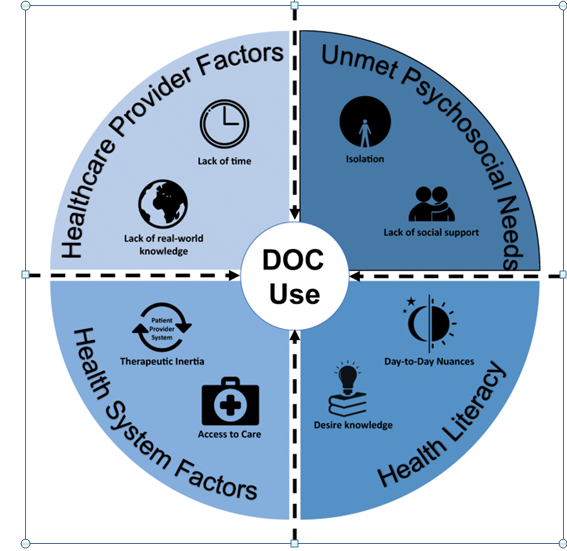
Every country has its own specific traditional dietary trends passed down to us many centuries ago from our ancestors. Likewise, in India, the Indian population is more accustomed to including rice and curries, and rotis in their diet. However, due to the rise and advancement in globalization and digitalization, there have been a lot of paradigm shifts with regard to the practice of cultural dynamics (Jensen,2021).http://BU7402 Health and Social Care Commissioning The world is becoming more and more accustomed to the dietary intake of the western culture and India is not an exception. In India, western dietary products such as foods that are processed
(such as sausages, cane food, beacons, and vice versa), along with carbohydrate intakes and vice versa are becoming very much prevalent. With the continuation of the urbanization of the cities, people are transitioning towards a more mundane and inactive form of lifestyle (Laway,2021).http://BU7402 Health and Social Care Commissioning Due to urbanization, the people and the populations from the villages are shifting from villages to the urban cities to lead a better life by earning lots of money and hence, such factors resulting in the decline of the activities that are related to physical due to the easy way of life in the urban city (thanks to the schemes such as Smart cities, the main objective of the main goal of which is to make our life better and easier) (Mithal,2021).http://BU7402 Health and Social Care Commissioning
There are many factors that contribute to the rise of diabetic-related diagnoses in India. Therefore, some of the factors which are resulting in the rise of the diagnosis of diabetes (both Type 1 form of diabetes and the Type 2 form of diabetes) in India are as follows-
- Poor way of lifestyle due to poverty and fewer resources
- Lack of information or education with regard to prevention strategies for diabetes
- Change in the eating habits of the population of India (especially those who are vegetarian) who are transitioning their dietary habits towards intake of high amounts of trans fats and carbohydrates (Gupta,2021).http://BU7402 Health and Social Care Commissioning
- The influence of the western culture is also having an impact on the eating habits of the Indian population so much so that in the last few years it has been witnessed that there has been a considerable increase in the consumption of processed food (such as can sausages, cane fruits, cane meats, and vice versa) among the population of India.
- Also, it has been witnessed that the amount of consumption of healthy foods such as fruits and nuts has considerably decreased in India (Kulkarni,2021).http://BU7402 Health and Social Care Commissioning
- Some other factors which are contributing to increasing the rate of the count of diabetic diagnosis in India are as follows- less physical related activities or exercise, longer duration of time spend near screens, an increase in the use of tobacco-related products, increase in the consumption of alcohol, rise in the pollution related to the environment, increase in the blood pressure, increase in the level of cholesterol and vice versa.
Critical analysis of the healthcare and the funding system in India with regard to diabetes:
India is known to be home to about 77 million people diagnosed with diabetes accounting to about nearly 15 % of the world’s count. India is known or referred to as the “Diabetic capital” in the world. It has been stated that nearly about 5 to 10 % of the country’s annual budget with regard to health has been spent on preventing and treating diabetes. According to a report, if crucial steps or measures are not taken, nearly about $237 million dollar of the country’s budget will be lost because of diseases related to heart and diabetes (Narayan,2021).http://BU7402 Health and Social Care Commissioning
The epidemiologic studies pertaining to diabetes in India suggest that diabetic-related diagnosis poses a great burden to the health care system in India. The control system of diabetes is very far from the ideal mean and is said to be still quite far behind as opposed to other international countries such as the USA, the United Kingdom, and vice versa. It has been reported that nearly half of the people or individual who has been diagnosed with diabetes mostly remain undetected mostly accounting for overwhelming complications in the health of the patients (Mave,2021). http://BU7402 Health and Social Care CommissioningAlbeit, the large count of diabetes in India, awareness with regard to diabetes is still very much lacking in many of the healthcare sectors in India. In India, the main difficulties or challenges that the healthcare system faces with regard to dealing with or treating diabetes are mostly with regard to – availability of training that is very limited with regard to nurses, truancy or unavailability of standardized guidelines with regard to managing or dealing with diabetic patients, the occurrence of fluctuations with regard to proper medications, the inadequate regulation of the private sector, the absence of systematic coordination between the providers of the healthcare and the different platforms of delivery of the healthcare, presence of buiness and bribery, poor governance, healthcare sector only looking for profit rather than actually taking care of the patients and also complacency in the proper recording of the database record with regard to the health of the patient (Paul,2021).http://BU7402 Health and Social Care Commissioning
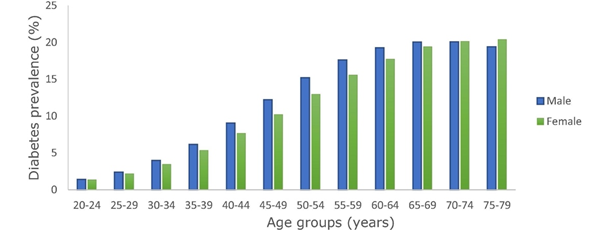
(Source: Sudevan,2021)
According to a report published by the IDF (the acronym for which is known as the international diabetic federation) in the year 2017 (Praveen,2021),http://BU7402 Health and Social Care Commissioning the age group in India between which the diagnosis of the diabetic disease seems to be the most prevalent are between 20 to 70 years of age. Looking at all such crises prevailing within the country, the government of India started implementing a program called the NPCDCS (the acronym for which is known as the National Programme for Prevention and Control of Cancer, Diabetes, Cardiovascular diseases, and Stroke). The main objective of this program i.e., the NPCDCS (the acronym for which is known as the National Programme for Prevention and Control of Cancer, Diabetes, Cardiovascular diseases, and Stroke) is to focus on creating awareness with regard to early diagnosis, and early treatment and the remaining follow up of the remaining activities to fight all such non-communicable diseases (Ganapathy,2021).http://BU7402 Health and Social Care Commissioning The government of India has also started PBS (the acronym for which is known as population-based screening) for people over the age of 30 years in order to test for diabetes and another form of NCDs (the acronym for which is known as the non-communicable diseases). If any of the patients are suspected of carrying such diseases, they are referred to the Health Centre and in case, they indeed end up being diagnosed with diabetes then in such case they are recommended for further follow-ups and treatments to treat the disease. Such an interventional system undertaken by the government of India is expected to help in yielding early diagnosis and identification of diabetes so as to prevent any further complications in the near as well as the far future.
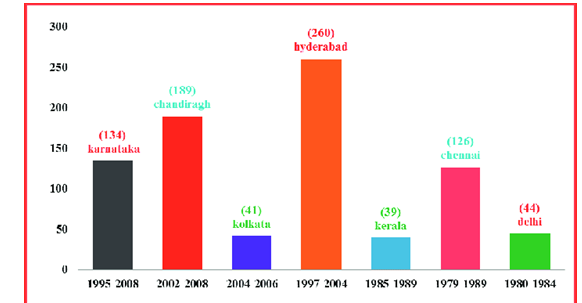
(Source: Sudevan,2021)
The government in India is also planning to come up with measures regard to coming up with stricter norms so as to regulate the sale of sugar-oriented beverages and other forms of junk foods in India. The health ministry along with the CFSR (the acronym for which is known as the central food safety regulator) in the country are planning to work on coming up with a proposal so as to curve the rise in the consumption of foods that are unhealthy (focusing on the children) in India, so as to minimize or prevent the occurrence of diabetes in India (Pradeepa,2021).http://BU7402 Health and Social Care Commissioning
Evaluate the current system and health care management of issues pertaining to diabetes in India:
There are many reasons that contribute to the rate of increase in diabetic counts in India and even in the rest of the world, such as genetic factors and vice versa. However, out of the available lots of reasons, the changing culture of lifestyle all around the world, including in India, is one such factor that is contributing the most to the rise in the diagnosis of diabetic disease.
Some other factors contributing to the occurrence of diabetes in India are as follows- Poor way of lifestyle due to poverty and less resources, lack of information or education with regard to prevention strategies about diabetes, change in the eating habits of the population of India (especially those who are vegetarian) who are transitioning their dietary habits towards intake of high amount of trans fats and carbohydrates, the influence of the western culture is also having an impact in the eating habits of the Indian population so much so that in the last few years it has been witnessed that there has been a considerable increase in the consumption of the processed food (such as can sausages, cane fruits, cane meats and vice versa) among the population of India and also, it has been witnessed that the amount of consumption of healthy foods such as fruits and nuts have considerably decreased in India which is further escalating the rise in the Indian population becoming very much susceptible and vulnerable to becoming a diabetic carrier.
Diabetic patients faced many forms of complications. Since the diabetic disease is related to uncontrolled levels of sugar, it ends up damaging the organs and other tissues present in the body. Some of the issues or complications that are faced by the Indian patients who are diagnosed with diabetes are as follows- disease related to heart attack, strokes, neuropathy, loss of hearing, poor or blurry vision, nephropathy, soreness which ends up not healing at all, conditions related to skin (for example, like the bacterial infections, in some rare cases some of the diabetic patients also ended up facing issues with dementia and depression and vice versa (Das,2021)http://BU7402 Health and Social Care Commissioning
In a variety of settings, including primary, community, and secondary care, people with diabetes are cared for by a number of different teams who work together. A consultant diabetologist must maintain professional responsibility and ownership for the service throughout the care planning process in order for the patient’s treatment to be coordinated effectively.
Patients’ overall care is the responsibility of general practitioners (GPs), who are in charge of their patients’ overall care over the duration of their treatment regimen. As a result, they have final responsibility in relation to any undesirable effects or issues that may develop during or after treatment is started.
It is important for patients with diabetes to have their emotional and psychological well-being assessed throughout their initial and ongoing treatment regimens. In addition, they should have access to appropriate psychosocial and biological/psychiatric treatment as well as adequate diabetic education as soon as they become aware of their condition. Psychological disorders may provide substantial obstacles to successful diabetic self-care, making it critical to maintain mental health stability in order to engage in proper self-care practices for diabetes patients. 1\s.
To improve governance and accountability, clinical monitoring and responsibility will also be given to the service providers themselves.
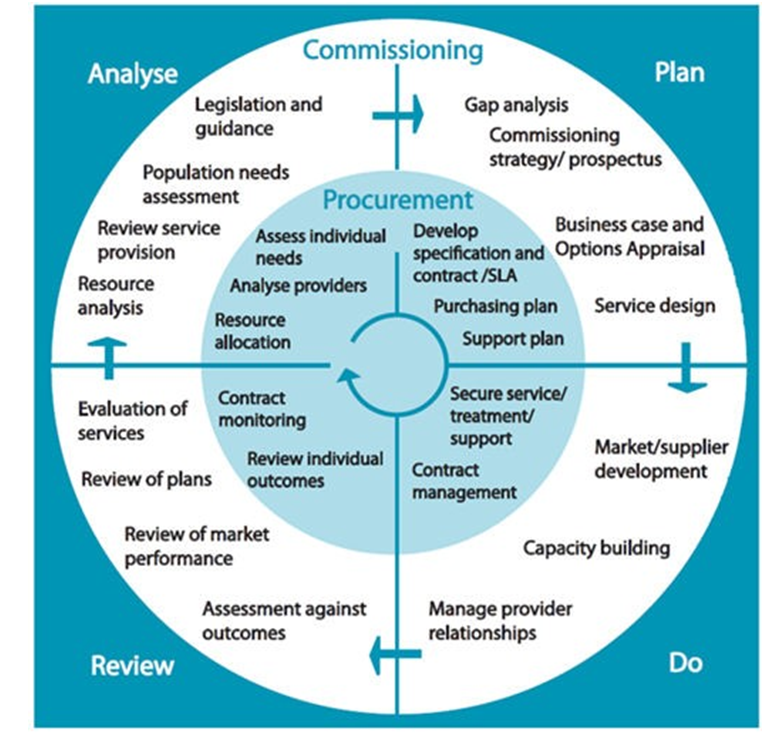
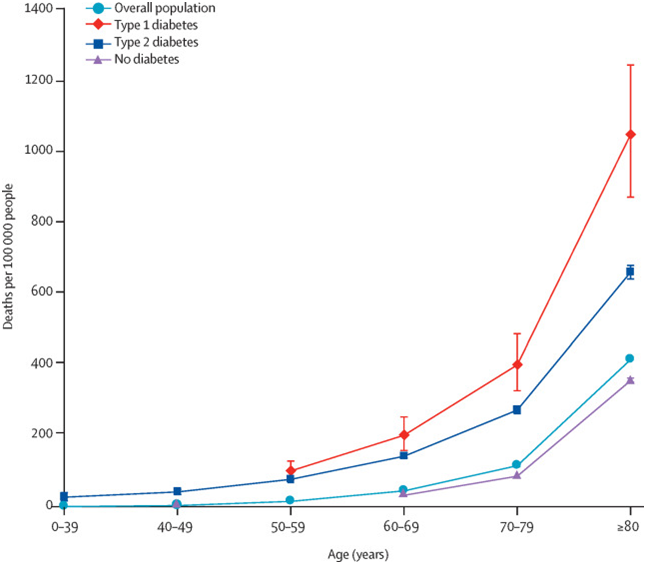
Diabetes patients will benefit from this contractual framework, which will be used to deliver services to those with the disease. In order to better serve children and adolescents with diabetes, commissioners are recommended to follow the commissioning guidelines for diabetes commissioning. Detailed information about these care groups may be found on the websites for older persons and the 2 organizations.
3. It should be investigated in conjunction with diabetes commissioning proposals, which include advice for prevention and risk assessment, amongst other things. 4th, take care of your feet 5, hospitalization and in-patient care 6, psychological well-being, 7, pregnancy 8, diabetes complications 9, palliative care and hospice These are all top goals, as does adhere to guidelines for effective contracting of services for persons with learning disabilities. 11. Ensuring that all diabetic patients get high-quality diabetes care. It is the obligation of commissioning organizations to make every effort to ensure that the diabetes services they procure are of the best possible standard of care. Organizations that seek to provide such services but do not have a track record of delivering high-quality care in this way may exist as well.
It is necessary to have retrospective proof that procedures have been implemented, that they are operational, and that they are operating effectively for provider organizations that have already been engaged in the delivery of diabetes care. When dealing with organizations that are new to the diabetes services arena, the commissioner should make certain that the provider possesses organizational qualities, governance structures, systems, and procedures that will allow it to serve as a platform for the safe and effective delivery of diabetes services.
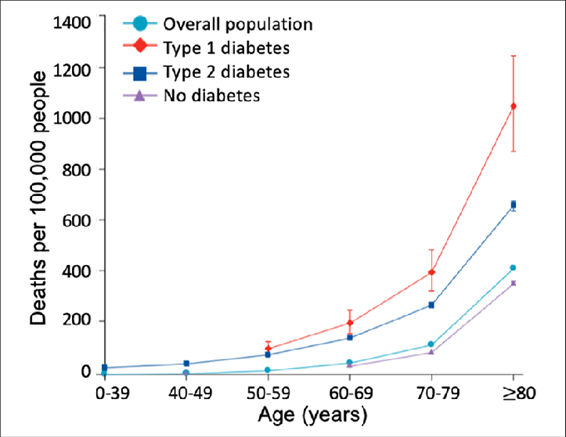
It is established under this framework what the Commissioning Body must guarantee is present or addressed throughout any interactions with a provider organization, as specified in the previous section, when the Commissioning Body engages with the provider organization.
Cross references to the Standard NHS Contract for Community Services – Bilateral (major clauses and schedules)12 can be found in the ‘elements’ column, which is divided into two sections. The first section contains cross-references to the Standard NHS Contract for Community Services – Bilateral (major clauses and schedules). A cross-reference to the Standard NHS Contract for Community Services – Bilateral Agreement is included in the first part (major clauses and schedules). Additionally, the cross-references are important to the criteria of the Standard NHS Contract for Acute Services, which is a standard contract for acute services in the National Health Service (SNHCA). Commissioning authorities and providers will benefit from this since they will have a clear understanding of how the components connect to the Standard NHS Contract. Because some of the subjects are open to interpretation, the sources that have been provided do not constitute a complete collection of information. (Yadav,2021).http://BU7402 Health and Social Care Commissioning
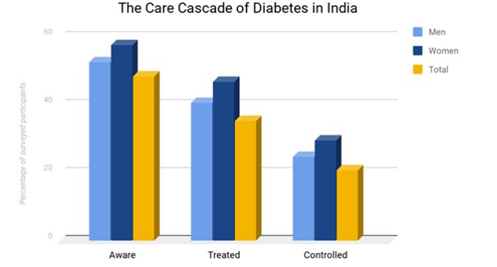
(Source: Sudevan,2021)
In India, the main difficulties or challenges that the healthcare system faces with regard to dealing or treating diabetes is mostly with regard to – availability of trainings that are very limited with regard to nurses, truancy or unavailability of a standardized guidelines with regard to managing or dealing with diabetic patients, occurrence of fluctuations with regard to proper medications (Durai,2021), http://BU7402 Health and Social Care Commissioning the inadequate regulation of the private sector, the absence of systematic coordination between the providers of the healthcare and the different platforms of delivery of the healthcare, presence of biasness and bribery, poor governance, lack of facilities solely dedicated to treating diabetes socio- cultural related factors, healthcare sector only looking for profit rather than actually taking care of the patients and also complacency in the proper recording of the database record with regard to the health of the patient (Sudevan,2021). http://BU7402 Health and Social Care CommissioningIndia are known to be home to about 1.2 billion people, out of which 40 % of the population are within or under the 18 years of age therefore, investment in the health of India’s population is very crucial in the future. Owing to all such inadequacies, it is very clear that the healthcare system in India is very poorly governed and managed and therefore, immediate actions should be undertaken in order to address all of these underlying liabilities of the healthcare system in India with regard to improving the facilities of treating diseases like diabetes and other chronic diseases (Rajaa,2021).http://BU7402 Health and Social Care Commissioning
Plan for the future implementation of a healthcare initiative
In order to mitigate all such issues faced by the healthcare sector in India with regard to controlling and treating diabetes disease, the government of India has come up with many schemes and programs to form an early diagnosis of the disease so as to prevent the occurrence of disease. However, such programs alone won’t be enough to curve the prevailing liabilities in India posed by diabetes and so, along with the programs and initiatives undertaken by the government, the following supplementary actions should also be undertaken by the healthcare system in order to mitigate the atrocities of the diabetic disease-
- Awareness and education with regard to diabetes should be given along with a screening for the diabetes
- Early diagnosis of the diabetic disease should be done so as to perform early treatment
- Oral medicines and insulin should be provided to the patients in order to keep their blood glucose levels in check and in control.
- Care centers for diabetic patients should be developed so that specific treatments and facilities will be provided particularly for treating the disease.
- Screening should be done in order to check for any problems relating to diabetes or other NCDs (the acronym for which is known as non-communicable diseases).
Conclusion:
The prevalence of the diabetic disease is said to be increasing and accelerating at an alarming rate all around the world where India is seen to be starting a high rise in its diagnosis. India is ranking them in the top charts with regard to the countries that are mostly affected by the diabetic disease.
As stated earlier, the exponential increase in the case related to diabetes in India is mostly because of the fluctuation in the living style of the people, along with changes in the dietary habits of the people, and also lack of physical activities (such as exercise and vice versa), increase in the weight of the body and vice versa. Indian healthcare system and the funding system (i.e., the governmental system) should not take the current crisis pertaining to diabetic disease lightly. Accessibility to health care specifically designed for treating patients of diabetes and also creating awareness and encouraging education relating to diabetes is said to be one mandatory step that the healthcare system and the funding system in India should consider in order to treat the occurrence of the disease i.e., the diabetic disease from the grassroots level.
Also, in order to minimize or reduce the burden arising due to diabetic disease, an approach to strengthen the standards of health care, along with nationally accepted standardized protocols, regulations and frameworks are very much the need of the hour to overcome the crisis faced by India with regard to Diabetic treatment and prevention. The steps taken by the government of India to control the disease are quite commendable but considering the situation in the country at present, an intervention from the grassroots level is needed.
Reference:
Das, A.K., Saboo, B. and Unnikrishnan, A.G., 2021. Current Practices and Gaps in Management of Dyslipidemia in Type 2 Diabetes Mellitus (T2DM) in accordance with American Diabetes Association (ADA) Guidelines: A Subset Analysis from a Real-World, Cross-Sectional Observational Study (LEADD Study). Diabetes, Metabolic Syndrome and Obesity: Targets and Therapy, 14, p.2693.
Durai, V., Samya, V., Akila, G.V., Shriram, V., Jasmine, A., Muthuthandavan, A.R., Gayathri, T. and Mahadevan, S., 2021. Self-care practices and factors influencing self-care among type 2 diabetes mellitus patients in a rural health center in South India. Journal of Education and Health Promotion, 10.
Ganapathy, A., Holla, R., Darshan, B.B., Kumar, N., Kulkarni, V., Unnikrishnan, B., Thapar, R., Mithra, P. and Kumar, A., 2021. Determinants of gestational diabetes mellitus: a hospital-based case-control study in coastal South India. International Journal of Diabetes in Developing Countries, 41(1), pp.108-113.
Ghazi, B.K., Rackimuthu, S., Wara, U.U., Mohan, A., Khawaja, U.A., Ahmad, S., Ahmad, S., Hasan, M.M., dos Santos Costa, A.C., Ahmad, S. and Essar, M.Y., 2021. The rampant increase in cases of mucormycosis in India and Pakistan: a serious cause for concern during the ongoing COVID-19 pandemic. The American Journal of Tropical Medicine and Hygiene, 105(5), p.1144.
Ghosh, A., Anjana, R.M., Rani, C.S.S., Rani, S.J., Gupta, R., Jha, A., Gupta, V., Kuchay, M.S., Luthra, A., Durrani, S. and Dutta, K., 2021. Glycemic parameters in patients with new-onset diabetes during the COVID-19 pandemic are more severe than in patients with new-onset diabetes before the pandemic: NOD COVID India Study. Diabetes & Metabolic Syndrome: Clinical Research & Reviews, 15(1), pp.215-220.
Gupta, A., Nayan, N., Nair, R., Kumar, K., Joshi, A., Sharma, S., Singh, J., and Kapoor, R., 2021. Diabetes mellitus and hypertension increase risk of death in novel coronavirus patients irrespective of age: a prospective observational study of Co-morbidities and COVID-19 from India. SN comprehensive clinical medicine, 3(4), pp.937-944.
Jensen, E.T., Dabelea, D.A., Praveen, P.A., Amutha, A., Hockett, C.W., Isom, S.P., Ong, T.C., Mohan, V., D’Agostino Jr, R., Kahn, M.G. and Hamman, R.F., 2021. Comparison of the incidence of diabetes in the United States and Indian youth: an international harmonization of youth diabetes registries. Pediatric diabetes, 22(1), pp.8-14.
Kaur, N., Majumdar, V., Nagarathna, R., Malik, N., Anand, A., and Nagendra, H.R., 2021. Diabetic yoga protocol improves glycemic, anthropometric, and lipid levels in high-risk individuals for diabetes: a randomized controlled trial from Northern India. Diabetology & Metabolic Syndrome, 13(1), pp.1-10.
Kulkarni, S., Ramachandran, R., Sivaprasad, S., Rani, P.K., Behera, U.C., Vignesh, T.P., Chawla, G., Agarwal, M., Mani, S.L., Ramasamy, K. and Raman, R., 2021. Impact of treatment of diabetic macular edema on visual impairment in people with diabetes mellitus in India. Indian Journal of Ophthalmology, 69(3), p.671.
Kumar, D., 2021. What Impact Have SARS-CoV-2/Covid-19 Pandemic induced lockdown on the number of OPD patients of Diabetes, Hypertension, Stroke (CVA), Acute Heart Disease, Mental Illness, Epilepsy, Ophthalmic, Dental, and oncology in India during the lockdown months (April-May-2020)–Observational Research Analysis?. Mental Illness, Epilepsy, Ophthalmic, Dental and Oncology in India During the Lockdown Months (April-May-2020)–Observational Research Analysis.
Kumar, S., Kumar, R., Rohilla, L., Jacob, N., Yadav, J., and Sachdeva, N., 2021. A high potency multi‐strain probiotic improves glycemic control in children with new‐onset type 1 diabetes mellitus: A randomized, double‐blind, and placebo‐controlled pilot study. Pediatric Diabetes, 22(7), pp.1014-1022.
Laway, B.A., Nabi, T., Bhat, M.H. and Fonda, B.A., 2021. Prevalence, clinical profile, and follow-up of asymptomatic bacteriuria in patients with type 2 diabetes-prospective case-control study in Srinagar, India. Diabetes & Metabolic Syndrome: Clinical Research & Reviews, 15(1), pp.455-459.
Marbaniang, S.P., Lhungdim, H., Yadav, B. and Yajurvedi, V.K., 2021. Overweight/obesity risks and prevalence of diabetes and hypertension in North Eastern India: An analysis using a seemingly unrelated probit model. Clinical Epidemiology and Global Health, 11, p.100764.
Move, V., Chen, L., Ranganathan, U.D., Kadam, D., Vishwanathan, V., Lokhande, R., Kagal, A., Pradhan, N.N., Shivakumar, S.V.B.Y., S Paradkar, M. and Deshmukh, S., 2022. Whole Genome Sequencing Assessing Impact of Diabetes Mellitus on Tuberculosis Mutations and Type of Recurrence in India. Clinical Infectious Diseases.
Mave, V., Gaikwad, S., Barthwal, M., Chandanwale, A., Lokhande, R., Kadam, D., Dharmshale, S., Bharadwaj, R., Kagal, A., Pradhan, N. and Deshmukh, S., 2021, April. Diabetes mellitus and tuberculosis treatment outcomes in Pune, India. In Open forum infectious diseases (Vol. 8, No. 4, p. ofab097). US: Oxford University Press.
Mishra, Y., Prashar, M., Sharma, D., Kumar, V.P. and Tilak, T.V.S.V.G.K., 2021. Diabetes, COVID 19 and mucormycosis: Clinical spectrum and outcome in a tertiary care medical center in Western India. Diabetes & Metabolic Syndrome: Clinical Research & Reviews, 15(4), p.102196.
Mithal, A., Jevalikar, G., Sharma, R., Singh, A., Farooqui, K.J., Mahendru, S., Krishnamurthy, A., Dewan, A. and Budhiraja, S., 2021. High prevalence of diabetes and other comorbidities in hospitalized patients with COVID-19 in Delhi, India, and their association with outcomes. Diabetes & Metabolic Syndrome: Clinical Research & Reviews, 15(1), pp.169-175.
Narayan, K.V., Kondal, D., Daya, N., Gujral, U.P., Mohan, D., Patel, S.A., Shivashankar, R., Anjana, R.M., Staimez, L.R., Ali, M.K. and Chang, H.H., 2021. Incidence and pathophysiology of diabetes in South Asian adults living in India and Pakistan compared with US blacks and whites. BMJ Open Diabetes Research and Care, 9(1), p.e001927.
Narayan, K.V., Kondal, D., Kobes, S., Staimez, L.R., Mohan, D., Gujral, U.P., Patel, S.A., Anjana, R.M., Shivashankar, R., Ali, M.K. and Chang, H.H., 2021. Incidence of diabetes in South Asian young adults compared to Pima Indians. BMJ Open Diabetes Research and Care, 9(1), p.e001988.
Pal, R., Yadav, U., Verma, A. and Bhadada, S.K., 2021. Awareness regarding COVID-19 and problems being faced by young adults with type 1 diabetes mellitus amid nationwide lockdown in India: A qualitative interview study. Primary care diabetes, 15(1), pp.10-15.
Paul, J., Devarapalli, V., Johnson, J.T., Cherian, K.E., Jebasingh, F.K., Asha, H.S., Kapoor, N., Thomas, N. and Paul, T.V., 2021. Do proximal hip geometry, trabecular microarchitecture, and prevalent vertebral fractures differ in postmenopausal women with type 2 diabetes mellitus? A cross-sectional study from a teaching hospital in southern India. Osteoporosis International, 32(8), pp.1585-1593.
Pradeepa, R., Subashini, R., Venkatesan, U., Ningombam, S., Purty, A., John, M., Reang, T., Luaia, R., Tripathy, S.K., Modi, S. and Mokta, J.K., 2021. Effect of internal migration on diabetes and metabolic abnormalities in India-The ICMR-INDIAB study. Journal of Diabetes and its Complications, 35(12), p.108051.
Praveen, P.A., Madhu, S.V., Viswanathan, M., Das, S., Kakati, S., Shah, N., Chadha, M., Bhadada, S.K., Kaur, T., Dhaliwal, R.S. and Das, A.K., 2021. Demographic and clinical profile of youth onset diabetes patients in India—results from the baseline data of a clinic based registry of people with diabetes in India with young age at onset—[YDR‐02]. Pediatric Diabetes, 22(1), pp.15-21.
Rajaa, S., Krishnamoorthy, Y., Knudsen, S., Roy, G., Ellner, J., Horsburgh, C.R., Hochberg, N.S., Salgame, P., Govindarajan, S., Babu, S.P. and Sarkar, S., 2021. Prevalence and factors associated with diabetes mellitus among tuberculosis patients in South India—a cross-sectional analytical study. BMJ open, 11(10), p.e050542.
Rajput, D.S., Basha, S.M., Xin, Q., Gadekallu, T.R., Kaluri, R., Lakshmanna, K. and Maddikunta, P.K.R., 2021. Providing diagnosis on diabetes using cloud computing environment to the people living in rural areas of India. Journal of Ambient Intelligence and Humanized Computing, pp.1-12.
Raman, R., Ramasamy, K., Rajalakshmi, R., Sivaprasad, S. and Natarajan, S., 2021. Diabetic retinopathy screening guidelines in India: All India Ophthalmological Society diabetic retinopathy task force and Vitreoretinal Society of India consensus statement. Indian Journal of Ophthalmology, 69(3), p.678.
Ranasinghe, P., Jayawardena, R., Gamage, N., Sivanandam, N. and Misra, A., 2021. Prevalence and trends of the diabetes epidemic in urban and rural India: A pooled systematic review and meta-analysis of 1.7 million adults. Annals of Epidemiology, 58, pp.128-148.
Saeedi, M., Cao, Y., Fadl, H., Gustafson, H. and Simmons, D., 2021. Increasing prevalence of gestational diabetes mellitus when implementing the IADPSG criteria: a systematic review and meta-analysis. diabetes research and clinical practice, 172, p.108642.
Selvan, C., Lathia, T., Chawak, S., Katdare, P., Nayak, R. and Chittem, M., 2021. The weight of words: Indian physicians’ perspectives on patient communication to promote diabetes adherence. Indian Journal of Endocrinology and Metabolism, 25(5), p.395.
Sen, S., Kim Ramasamy, T.P., Kannan, N.B., Sivaprasad, S., Rajalakshmi, R., Raman, R., Mohan, V., Das, T. and Mani, I., 2021. Identification of risk factors for targeted diabetic retinopathy screening to urgently decrease the rate of blindness in people with diabetes in India. Indian journal of ophthalmology, 69(11), p.3156.
Sivanantham, P., Sahoo, J., Lakshminarayanan, S., Bobby, Z. and Kar, S.S., 2021. Profile of risk factors for Non-Communicable Diseases (NCDs) in a highly urbanized district of India: Findings from Puducherry district-wide STEPS Survey, 2019–20. PloS one, 16(1), p.e0245254.
Subba, R., Sandhir, R., Singh, S.P., Mallick, B.N. and Mondal, A.C., 2021. Pathophysiology linking depression and type 2 diabetes: psychotherapy, physical exercise, and fecal microbiome transplantation as damage control. European Journal of Neuroscience, 53(8), pp.2870-2900.
Sudevan, R., Raj, M., Vasudevan, D.M., Arun, C., Thachathodiyl, R., Vijayakumar, M., Abdullakutty, J., Thomas, P., George, V. and Kabali, C., 2021. Compliance of secondary prevention strategies in coronary artery disease patients with and without diabetes mellitus–A cross-sectional analytical survey from Kerala, India. Indian Journal of Endocrinology and Metabolism, 25(2), p.129.
Thomas, L., Asha, H.S., Amalraj, R.E., Prakash, R., Abraham, P. and Thomas, N., 2021. The utility of Problem Areas in Diabetes (PAID) scale amongst patients with Type 2 diabetes (T2DM): An experience from a teaching hospital in Southern India. Journal of Family Medicine and Primary Care, 10(4), p.1687.
Tiwari, A., Kumar, D., Ansari, M.S., Chaubey, S.K., Gupta, N.R., Agarwal, V., Chandra, K.P., r Pande, A., Awasthi, R., Gupta, M. and Chowdhary, S., 2021. Impact of lockdown on self-care management among patients with type 2 Diabetes Mellitus residing in Lucknow city, India–A cross-sectional study. Clinical Epidemiology and Global Health, 10, p.100703.
Tyagi, K., Ghosh, A., Nair, D., Dutta, K., Bhandari, P.S., Ansari, I.A. and Misra, A., 2021. Breakthrough COVID19 infections after vaccinations in healthcare and other workers in a chronic care medical facility in New Delhi, India. Diabetes & Metabolic Syndrome: Clinical Research & Reviews, 15(3), pp.1007-1008.
Vasanthan, M., Vinodhini, V.M. and Kasthuri, N., 2021. Effectiveness of Educative Session on Knowledge, Attitude and Practice, on Diabetes and Dyslipidemia, of Patients Attending a Private Medical College Hospital in South-India. Biomedical and Pharmacology Journal, 14(4), pp.2199-2205.
Yadav, A., Yadav, G.A.M., Narsingrao, K.K., Kumar, L.N. and Yadav, G.S.N., 2021. Prevalence of thyroid disorders among patients with diabetes in rural South India. Diabetes & Metabolic Syndrome: Clinical Research & Reviews, 15(3), pp.885-889.
Reading List
NHS England (2020) Commissioning for Quality and Innovation (CQUIN) https://www.england.nhs.uk/wp-
content/uploads/2020/01/FINAL-CQUIN-20-21-Core-Guidance-190220.pdf
The Royal Society for Public Health (2014) The RSPH Guide to Commissioning for Health Improvement.
https://www.rsph.org.uk/static/uploaded/541a9978-c766-43c2-a7488aa856570071.pdf
Wilson, F., Massey, A. and Mabhala, A. (2015) Health Improvement and Well-being: Strategies for Action. New
York: McGraw-Hill Education.
World Health Organisation (2017) Strengthening health systems for universal health coverage and sustainable
development https://www.who.int/bulletin/volumes/95/7/16-187476/en/
World Health Organisation Global Health Observatory https://www.who.int/data/gho Accessed

